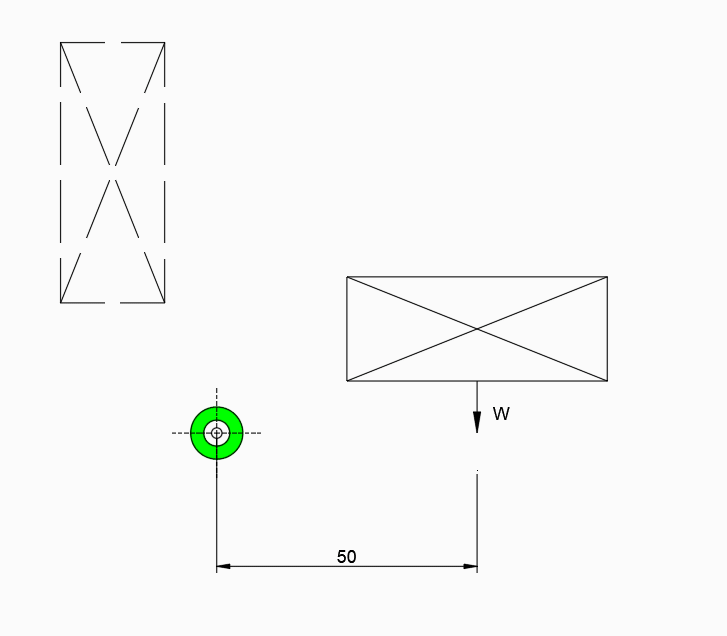Hello folks, I need sanity check. I am designing lid and I need to choose damper for soft opening since I have torsional spring which opens the lid when latch for the lid is released.
So from internet one source is referring that is necessary to get toque of lid and torque of spring. So torque of spring for my case is 150 N*mm, while torque to the lid is needed to calculate.
Weight of my lid 0.25kg, and length from pivot point of rotation to center of the gravity of the lid 50 mm.
T(Lid) = 0.25kg * 9.81 m/2^2 * 50 mm = 122 N*mm;
And torque for damper is T(Damper) = T(Torsional spring) - T(Lid) = 28 N*mm convert to N*cm is 2.8 N*cm for easier search of catalogues for dampers.
I am interested is this correct way of defining damper, or I am missing something? Below is sketch, green circle on the left represent torsional spring and dashed rectangle is lid in open position.

Regards,
Azzazil
My CATIA v5 Macro channel:
So from internet one source is referring that is necessary to get toque of lid and torque of spring. So torque of spring for my case is 150 N*mm, while torque to the lid is needed to calculate.
Weight of my lid 0.25kg, and length from pivot point of rotation to center of the gravity of the lid 50 mm.
T(Lid) = 0.25kg * 9.81 m/2^2 * 50 mm = 122 N*mm;
And torque for damper is T(Damper) = T(Torsional spring) - T(Lid) = 28 N*mm convert to N*cm is 2.8 N*cm for easier search of catalogues for dampers.
I am interested is this correct way of defining damper, or I am missing something? Below is sketch, green circle on the left represent torsional spring and dashed rectangle is lid in open position.

Regards,
Azzazil
My CATIA v5 Macro channel:
